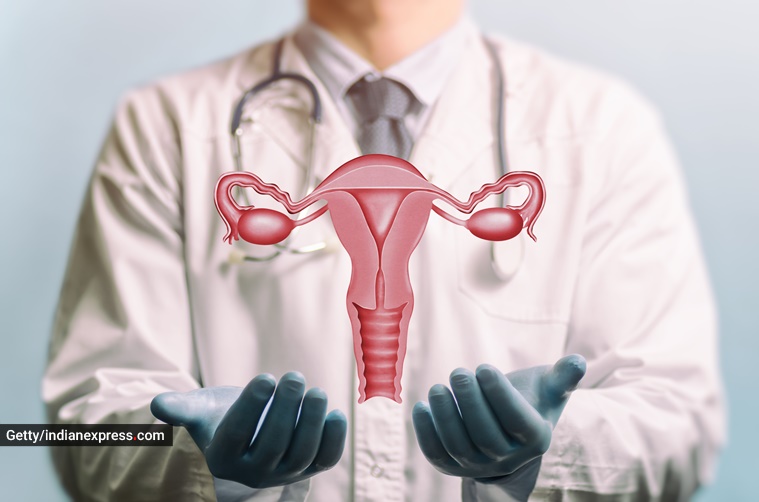📣 For more lifestyle news, click here to join our WhatsApp Channel and also follow us on Instagram
Is it possible to get pregnant with only one fallopian tube in the body?
"The answer is a definite yes and with a good chance, provided certain other factors are enabling," a doctor assured
 A doctor said since ovulation occurs in either of the ovaries, both the tubes have work to do. While the majority of women have a healthy pair of fallopian tubes, there are some who have only one functioning tube. (Photo: Getty/Thinkstock)
A doctor said since ovulation occurs in either of the ovaries, both the tubes have work to do. While the majority of women have a healthy pair of fallopian tubes, there are some who have only one functioning tube. (Photo: Getty/Thinkstock) Can a woman with only one fallopian tube get pregnant? This is a question that many have asked, especially those that understand the female reproductive system and how it functions. It needs to be understood that the system consists of four parts: the vagina, uterus, fallopian tubes and the ovaries.
“Fallopian tubes are tubular, hollow seromuscular structures that extend from the uterine horns to the ovaries in the female pelvis. They are two in number — one on the right side and one on the left side. The tube has four parts: uterine, isthmus, ampulla, and infundibulum,” explained Dr Chitra Ganesh, HOD and senior consultant, fetal medicine, Kauvery Hospital (Electronic City) Bengaluru.
According to the doctor, once fertilisation occurs in the fallopian tube after 4-5 days, the embryo is “moved to settle in the uterus by the coordinated peristalsis-like movement of the tube”. Tubes, therefore, play an important role in the fertility of women. “A patent tube alone is not sufficient; overall tubo-ovarian relations should be healthy,” she said.
Dr Chitra said that since ovulation occurs in either of the ovaries, both the tubes have work to do. While the majority of women have a healthy pair of fallopian tubes, there are some who have only one functioning tube.
What causes the loss of functioning of the fallopian tube?
The expert stated that causes for malfunctioning or non-functioning of fallopian tubes include:
* Prior infection(s) or medical conditions that have rendered the tubes scarred, damaged, or removed.
* Ectopic pregnancy (tubal pregnancy) that has resulted in permanent tube damage or removal of the affected side.
* Anatomical developmental abnormality (mostly by birth) that renders a tube non-functional.
* Scarring of the tube as the result of endometriosis, where the tube can be stuck to the ovaries/uterus.
* Fibroids (benign tumours of the uterus), due to their location, can block the fallopian tube or its entrance to the uterus.
* Prior abdominal or pelvic surgery that has caused scarring or damage to the tube.
But, can having one fallopian tube still allow pregnancy?
“The answer is a definite yes and with a good chance, provided certain other factors are enabling,” the doctor assured, adding that first and foremost, it needs to be seen whether the available tube is patent.
 In a woman with one tube and an irregular cycle, pregnancy can be delayed. (Photo: Getty/Thinkstock)
In a woman with one tube and an irregular cycle, pregnancy can be delayed. (Photo: Getty/Thinkstock)
“Age has a direct impact on the quality of eggs. The ovaries contain thousands of immature oocysts or eggs, and the number of eggs the woman will develop in her lifetime is already determined when she is born. When the girl matures and her ovulation starts, her eggs go through a phase of cell division called ‘meiosis’. During this process, older eggs are more likely to develop DNA errors leading to genetically abnormal eggs. Poor egg quality combined with one fallopian tube reduce the chances of conception. So, young women with one tube are at a higher chance to conceive than older women,” Dr Chitra stated.
She added that the third factor to consider is the regularity of menstrual cycles. “Average menstrual cycle for most women is between 21-35 days. Regular menstrual cycle helps to time the ‘fertile’ period with more accuracy than irregular cycles. In a woman with one tube and an irregular cycle, pregnancy can be delayed.”
Other factors for pregnancy, according to the expert, include endocrine problems like diabetes, polycystic ovarian syndrome (PCOS), which can affect the ovulation itself. The health of the partner and the sperm/semen quality also matters.
“If a woman has only one tube and any of the above-mentioned factors interfering with her pregnancy, it is important the couple consult an infertility specialist. If both the tubes are blocked, assisted reproduction techniques are the only solution,” she concluded.
📣 For more lifestyle news, follow us on Instagram | Twitter | Facebook and don’t miss out on the latest updates!
📣 For more lifestyle news, click here to join our WhatsApp Channel and also follow us on Instagram





- 01
- 02
- 03
- 04
- 05






















